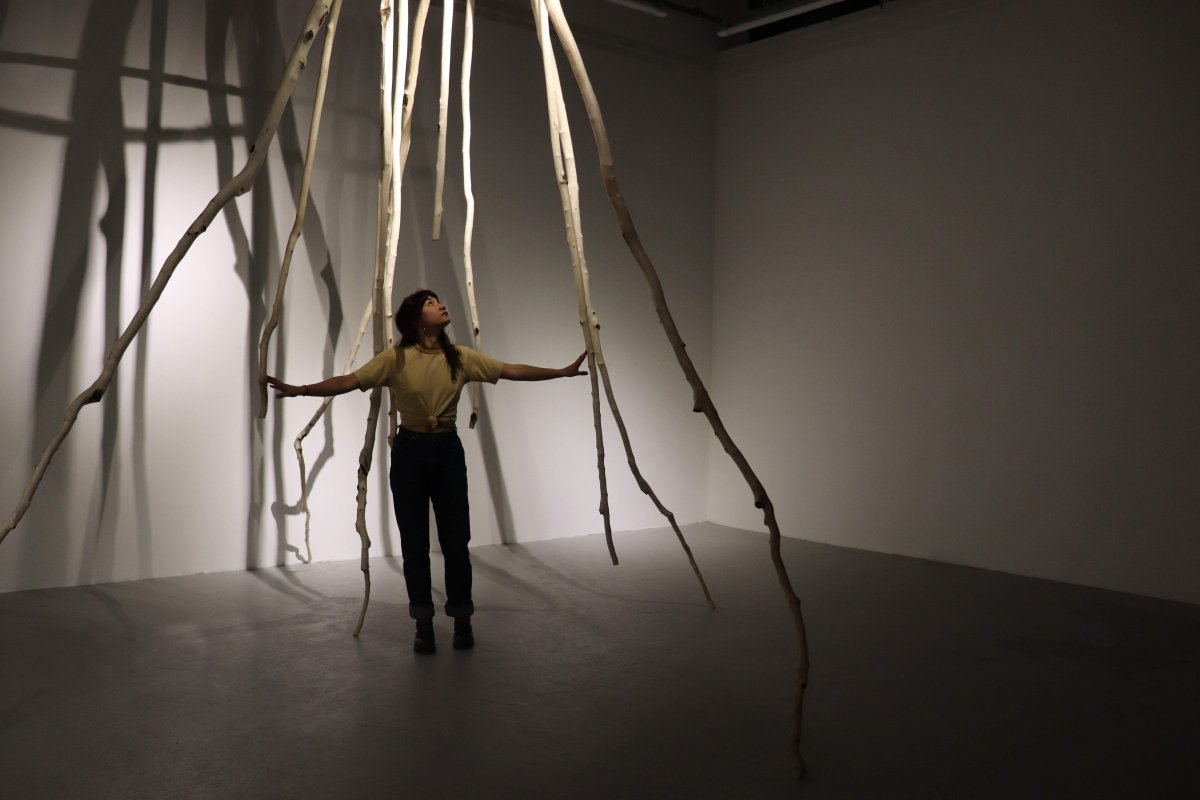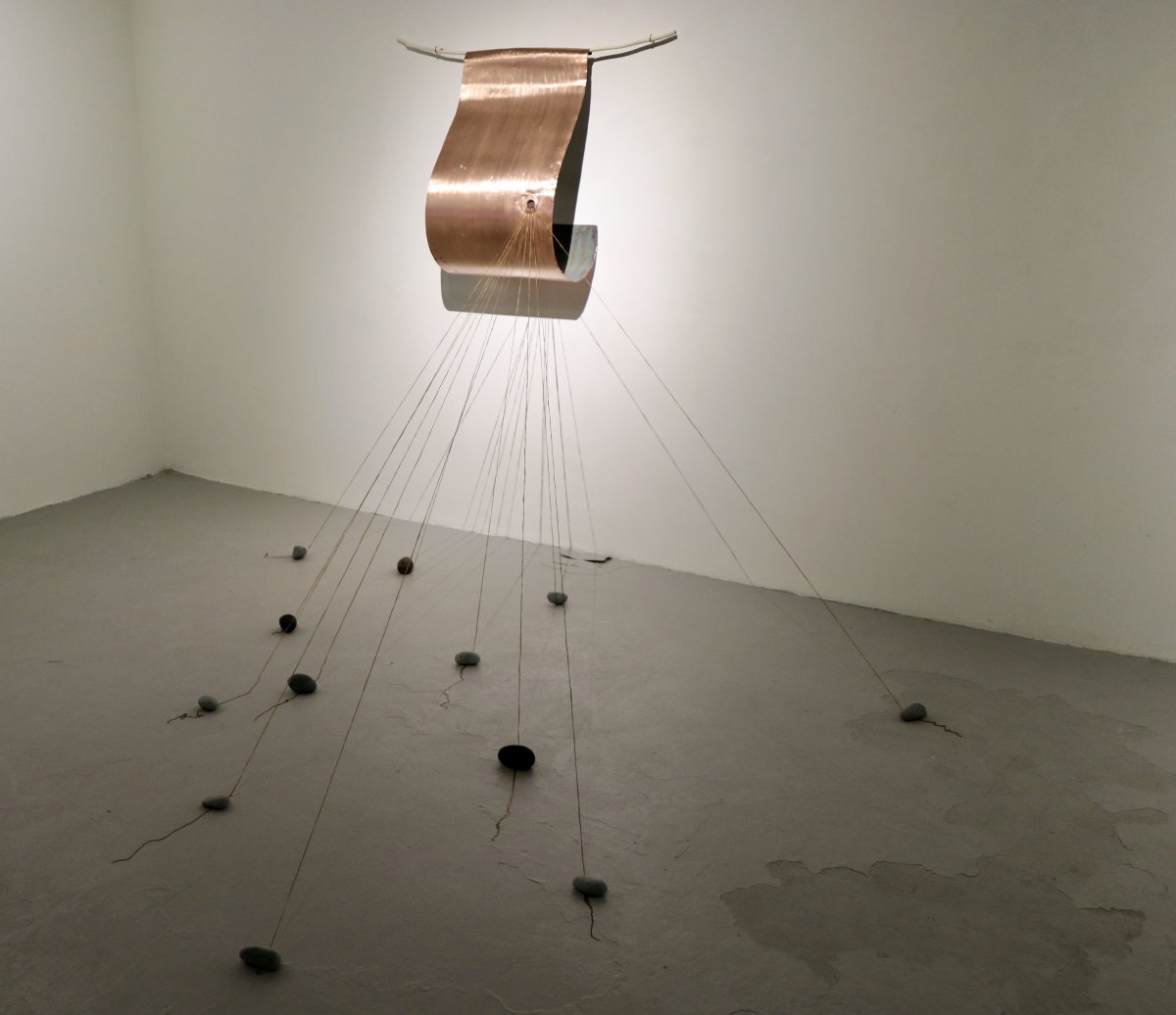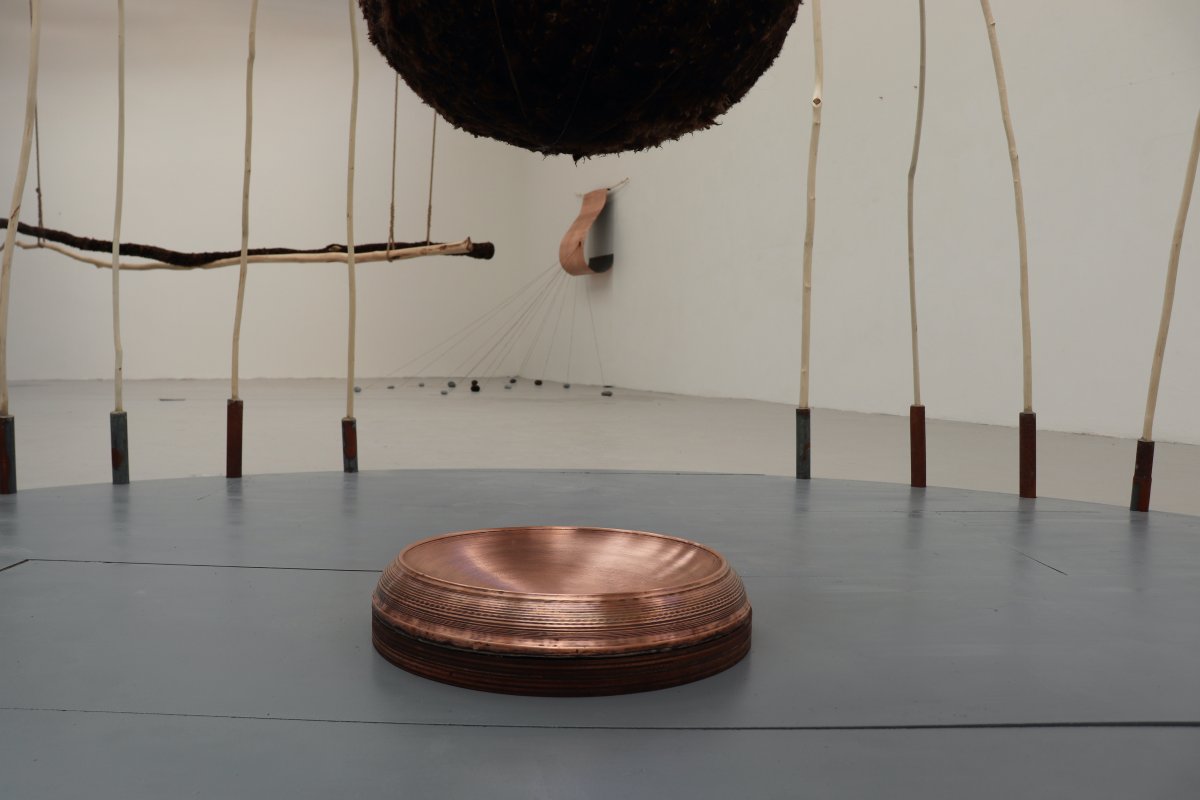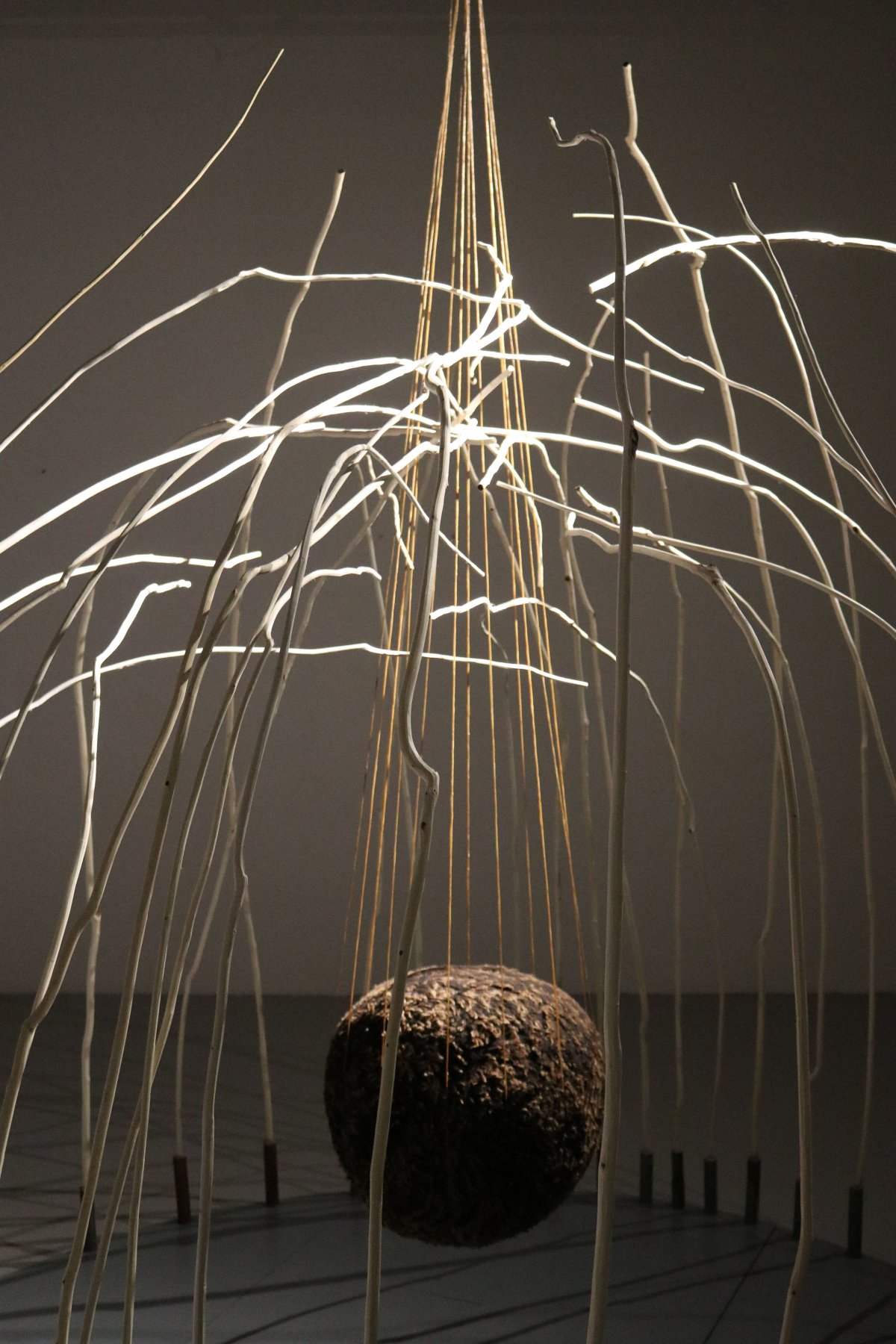10 February 2025

Hi Ellen, first of all congratulations on receiving the fellowship! Can you tell us about your journey as an artist? How did you first get started in the visual arts?
As a child I enjoyed most creative endeavours. However, without having any professional creatives around I could never really fathom the idea of ‘Artist’ as a profession. So my first degree was a Bachelor of Interior Architecture – a degree which seemed to offer a nice balance between the pragmatic and creative aspects of design. Most of the projects we were given were quite speculative, however, I still felt limited by the practical necessities that a building demands, and found myself increasingly averse to all the computer programs that are so inculcated into the profession these days. All of my electives, where I could, were at the adjoining arts school, COFA, and so I found myself dabbling a little in a lot of different modes of art making.
Despite never pursuing architecture as a career, the training greatly influenced my working methodology as an artist – for example, my appreciation for materiality, scale, spatial dynamics, and collaboration.
I am interested in eco-phenomenology, deep ecology, eco-materialism, and the exploration of enduring materials, recipes and techniques from the Pre-Industrial to the Palaeolithic.
When I moved into the Northern Rivers in 2016 I landed amongst ceramicists, the most influential of whom was Suvira McDonald, a renowned local artist and one of Australia’s leading wood-fired potters. I immediately fell for the elemental magic and communal aspect of wood-firing and subsequently spent a lot of time chopping wood, firing kilns and drinking cups of tea with Suvira. He remains one of my dearest friends, and it was he who facilitated my deepening engagement with sculpture. After a few years in the liminal lands of the Shire, I started to get itchy feet and ended up applying and getting into an MFA program at a tiny art school in the rural west coast of Ireland called the Burren College of Art. It was magic, and rainy, with a shaggy castle and wild goats. I had two years where I could just play and figure out what an art practice felt and looked like to me – what I wanted to explore conceptually and what felt true.
At the completion of my degree I found myself back in the Northern Rivers. Fortunately, I fell into working with Lindy Lee as one of her artist assistants – a role which I have been in full-time for the past three years. Working for Lindy has been incredibly eye-opening, inspiring and empowering in many ways – deepening my understanding of the artistic landscape in Australia and internationally, as well as what it takes to reach this level of success in one’s practice. It’s been a really significant part of my journey also. Just a few weeks ago I terminated working with Lindy to focus solely on my own practice. The beginning of another major, and very exciting, chapter of my artistic career to date.

Were there any particular moments or experiences that solidified your path as an artist?
In 2012 I volunteered for the Sydney Biennale at Cockatoo Island where I vividly remember invigilating an installation by Philip Beesley – an architect and artist who created this speculative nature-scape using an intricate lattice of luminous acrylic fibres, tendrils and feathers that would curl and caress in response to human activity. Suspended flasks containing essential oils would heat up with increased audience engagement, releasing their scents. It was a seemingly magical, responsive architectural environment.
This idea of art as a means to explore and present future possibilities deeply resonated with me. It expanded my understanding of the role of art, revealing its capacity to construct and posit new worlds, as a result of its radically speculative nature.
Earthly materials are often loaded with all sorts of weird and wonderful mythological, spiritual, socio-political and historical associations.
How would you describe your artistic style and the themes you explore in your work?
Despite the madness that goes on in my studio, stylistically, I feel my work ends up being quite subtle and subdued. I like to think that I allow space for the materials to speak for themselves. Once, during a process of reflective writing about my graduate installation I wrote that it ‘spoke in tongues inaudible to the human ear, yet perhaps resonant with the human psyche’. At times I get a sense that the materials are colluding in some secret business that our human minds inhibit us from being entirely privy to.
For a more somewhat more straightforward answer to your question, my works are often immersive, experiential, at times a little irksome, and very organic.
Thematically, I am interested in eco-phenomenology, deep ecology, eco-materialism, and the exploration of enduring materials, recipes and techniques from the Pre-Industrial to the Palaeolithic.

Your work often incorporates natural materials such as fibre and wood, as well as thought-provoking elements like sheep intestines and bio-crete. What draws you to these materials, and how do they shape the narrative of your creations.
From the beginning I was quite staunch that I wanted to avoid synthetic and environmentally-harmful materials in my art practice, and so turned to the discarded, obsolete and undervalued materials present in my surrounding landscape. As I got deeper into research, my passion for these materials grew to the point where I tend to leverage my practice as a means of exploring and advocating for traditional and innovative sustainable materials and processes.
Such earthly materials are often loaded with all sorts of weird and wonderful mythological, spiritual, socio-political and historical associations, and these continue to morph and develop as times evolve. I think a lot about their qualities and characteristics and their affectation on the human body and psyche.
At times I get a sense that the materials are colluding in some secret business that our human minds inhibit us from being entirely privy to.
Can you share a little about your creative process? What inspires your ideas, and how do you bring them to life?
My creative process is very experimental and material-led. I always start by immersing myself in landscape, finding inspiration through the local materiality and its colours, textures, forms. I’ll often take a sketchbook with me or a camera and zone in on magic in the microcosms. Then I play with an array of different processes – grinding, dyeing, whittling, washing, waxing, felting, mixing one thing with another, playing with scale. I like to take a material and transform it, explore its inherent potential.
These processes are often quite labour intensive and have resulted in a lot of cuts, blisters and tender hands, but I like their rhythmic and meditative nature. It also is a way of familiarising myself with a material. The process of transformation then leads to the creation. So, rather than buying pre-made felt, I like to make it from scratch. I feel that this way it the energy of the material is retained, it’s more vital.

What does the ‘NSW Visual Arts Fellowship (Emerging)’ mean to you and your practice? And how do you plan to use the opportunities that come with the fellowship to further your work?
VAFE is a huge vote of confidence in my practice and a provides a big leg-up into the industry. It’s a renowned and highly visible program, and is therefore a significant landmark in any emerging Australian artists career. Being one of six finalists provides me with eight months of professional and curatorial support from the Artspace team, in the lead up to a group exhibition at Artspace in Sydney which opens towards the end of August.
I intend to use this period to professionalise my practice – to refine my ability (and confidence) in articulating what my work is about and why, to consolidate my research and material experimentations, broaden and diversify my creative network and get really inspired and motivated by my fellow finalists – and have a lot of fun along the way!
Can you give us a glimpse into any projects or ideas you’re currently working on, especially those influenced by this recognition.
Currently, I’m working on an immersive installation entitled ‘Curtain of Kin’ for a group show at Grafton Regional Gallery, curated by Chris Wilcocks. It is made with fallen Eucalypt branches and recycled copper and will present as a sort of elemental portal that one can step into for an embodied sensory experience.
I’m also working towards my first solo exhibition, entitled ‘A tapestry of blood of bone’ which will be held at Lone Goat Gallery in Byron. This is due to open on the 28th March. The title speaks to the materials that will be featured – an array of various fibres, saps, pigments and minerals. I’m also beginning to realise that it’s an ode to my grandmothers’, both of whom were makers of beautiful tapestries, and imbued me with rather contrasting expressions of creativity and femininity.
TRUE NORTH: From the Forest Floor | Grafton Regional Gallery | March 1 – April 27, 2025
A TAPESTRY OF BLOOD AND BONE | Lone Goat Gallery, Byron Bay | March 29 – April 26, 2025
